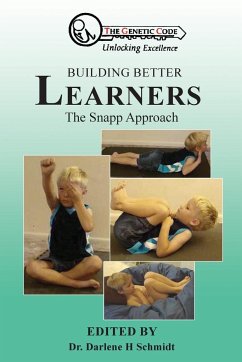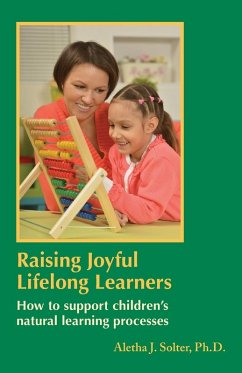
Building Better Learners
The Snapp Approach

PAYBACK Punkte
10 °P sammeln!
This book was the enthusiastic effort of seven dedicated educators who knew the late Edward A. Snapp, Jr., Physical Therapist. Encapsulated here are thousands of bits of information from the notes that Ed referred to as "just a scratch on a mountain". You will find information on how you can help your 1st or 2nd grader be better equipped to successfully respond to academic instructions as well as increase your child's level of coordination in all activities, including sports. Even Pre-K and Kindergarteners would benefit from Visual Tracking, Fact Teaching, Pounding and Counting, and Matching V...
This book was the enthusiastic effort of seven dedicated educators who knew the late Edward A. Snapp, Jr., Physical Therapist. Encapsulated here are thousands of bits of information from the notes that Ed referred to as "just a scratch on a mountain". You will find information on how you can help your 1st or 2nd grader be better equipped to successfully respond to academic instructions as well as increase your child's level of coordination in all activities, including sports. Even Pre-K and Kindergarteners would benefit from Visual Tracking, Fact Teaching, Pounding and Counting, and Matching Varied Rhythm. Snapp believed that learning begins at conception. Genetics provides the structure to function and the environment will determine if the function is successful. All people have learning gaps. This book will guide you through Snapp's methods to replace these gaps with learning ability by taking the child through basic human movements.














